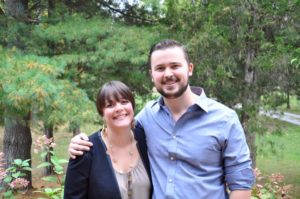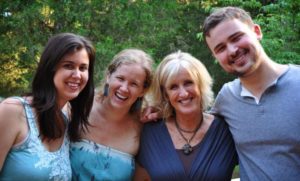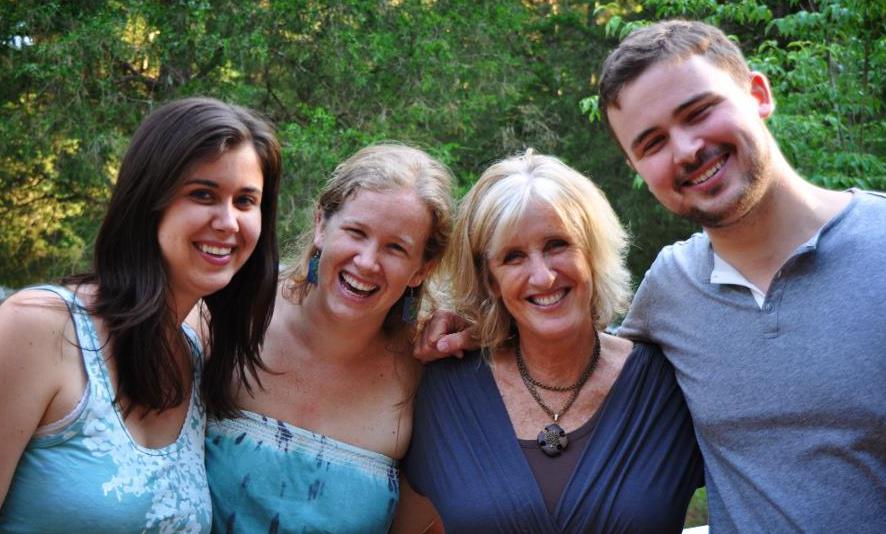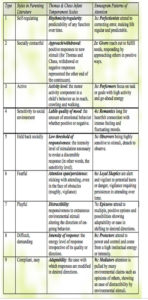
My son and his wife
Any day now, my son and his wife are expecting their first child. I can’t stop thinking about who she will be. My son reads everything he can on babies and parenting. He’s a head (fear) type like me. We both like to read to get some understanding and certainty in something as terrifying as being charged with caring for someone so small and vulnerable.

My children and me. Four people with very different temperaments
You can’t do what I do for a living and not think about temperament when babies are born. I knew nothing about temperament when I was a young mother. I wished I did because once I understood that babies are wired differently at the gate, I began to parent them differently.
Before I understood the Enneagram, their differences made me anxious. It was like I didn’t have the right playbook. How could I support these little people who are nothing like me? (Not one of my children shares my Enneagram style).
“Mothers of more than one child report vast differences in each of their infant’s personalities, including their energetic activities and movements in utero.” Dr. David Daniels

My husband and grandson
As a child, I was playful and highly responsive to my environment diving in and engaging it full throttle. This style of responsiveness was wired into my system. Not so with any of my three children or my grandson.
I was grateful the Enneagram came into my life while they were still school age as it was like someone turned on a lightbulb which changed how I parented them and related to them.
Besides the obvious benefits of being a grandparent, I love knowing what I know now as I can calibrate my tendencies with my grandson’s. I accept that his temperament is hard wired into his body…or “soma.”
Understanding that each of my clients has a fundamentally different “somatic” hardwiring changes how I work with them.
Even more crucial, in love and work we must understand and accept OUR OWN tendencies so we can notice them and develop practices to help us manage ourselves in relationship with self and others.
It’s not about changing your temperament. This is almost impossible and sets you up for failure if you try. It’s about self-awareness and self-management.
It’s also about understanding yours others’ hardwiring. Would you try to force an oak tree to behave like a cedar? It would be an exercise in futility.
If you’re a parent, knowing their core tendencies can prevent you from setting a child up for shame, failure and frustration.
On this New Year’s Day, as we await the birth of our granddaughter, I was delighted to stumble upon this posthumously published article written by my dear teacher and friend, Dr. David Daniels who died this past summer. He dives into some remarkable research on temperament and he pairs this with what we know about Enneagram styles.
He makes the crucial point that learning to attune to others’ differences cultivates greater self-acceptance and healthy development.
He recommends that we “adapt our parenting to fit the child’s temperament pattern, not the other way around, which can look more like forcing a child to be like us or some model we’ve come to believe they should be.”
I am eternally grateful for David’s counsel because in my early parenting days, I was going down the road of trying to cram my children into the box that was created by me, my parents and their parents before them. Self-awareness allows all of us to observe our tendencies and learn to manage them.
I tell you this so you can give yourself a break if you’ve noticed yourself doing the same. It’s never too late to change. As you do, you’ll find yourself more curious about others in your life who, in many ways, are offering you a different lens on the world.
If you’d like to learn more about yourself and your temperament, there are a few different ways you can do it.
- Read one of the many excellent Enneagram books out there. My current favorite is “The Complete Enneagram” by Beatrice Chestnut. Dr. Daniels wrote “The Essential Enneagram” which is a great start for helping you determine your type.
- Watch one of my YouTube videos where I dive into the different Enneagram styles
- While I no longer do stand alone typing interviews, I am currently accepting clients ready for a deep dive whether you’re working with your own development, your relationship with a child/significant other or experiencing some kind of significant loss. You can also book a workshop or retreat for your organization or group. CLICK FOR INFORMATION
- I will be doing an Enneagram introduction at the New Riff Event Center on February 27, 2018.
- The International Enneagram Association (IEA) conference is in Cincinnati on July 20-22, 2018. Information here.


